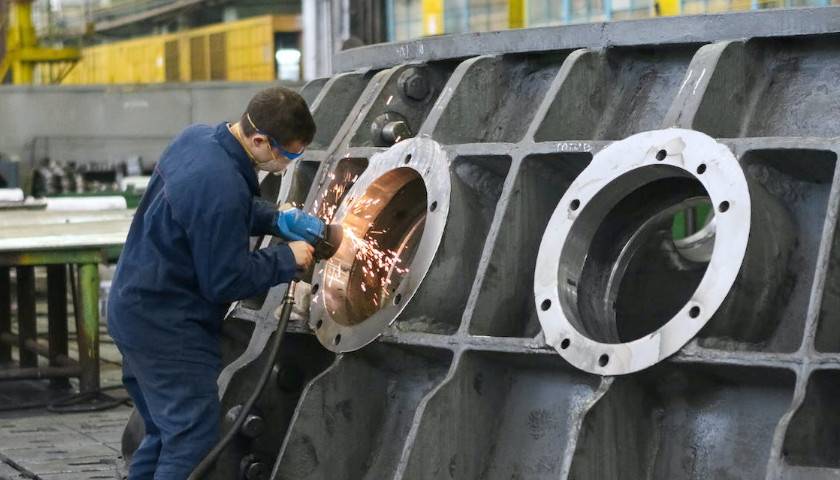by Raul M. Gutierrez
The world paid little attention when the leaders of North America met in a summit in Mexico City last month, but what they decided was momentous. President Biden, Mexican President Lopez-Obrador and Canadian Prime Minister Trudeau agreed to build on President Trump’s 2020 trade agreement to find new ways to integrate their economies, boosting manufacturing and significantly reducing reliance on Asia.
The leaders pledged to persuade workers, businesses, and public servants in the three countries that uniting the continent will boost output, employment, and national security.
The last three years have taught us that our three economies have become too dependent on manufacturing supply chains that stretch halfway around the globe. The North American leaders want to use the platform of the United States-Mexico-Canada Agreement (USMCA) to remedy the situation by increasing what’s called “near-shoring,” or bringing value chains closer to home.
“The rise of an aggressive and revisionist China, a devastating global pandemic, the disruptive churn of technological advancement, and—most recently—Russia’s invasion of Ukraine, are prompting a dramatic rethinking of the value of lean, globally distributed supply chains,” wrote Sujai Shivakumar, director of the Renewing American Innovation Project at the Center for Strategic and International Studies, and two colleagues in June.
The groundwork was laid for shortening supply chains by the USMCA, which was approved overwhelmingly in all three countries. The pact lets nearly all goods and services flow freely, without tariffs, across North American borders.
This continent’s trading bloc is enormous, and the U.S. is the main beneficiary. According to the Woodrow Wilson Center, during 2021, “a record 75% of Canadian and Mexican imports came from the United States, making both countries the US’s largest export markets.”
But, as the supply-chain crisis has demonstrated, more North American integration and expansion are needed, and the leaders of the three countries have now resolved to make changes to public policy to bring increased manufacturing to the continent – by attracting North American companies back from China, by strengthening domestic firms, and by enticing Asian factories to move to our three countries.
As an example of new cross-border cooperation, U.S. Commerce Secretary Gina Raimondo in September asked Mexico to establish incentives to bring semiconductor manufacturers and the companies that support them to North America. The U.S. and Mexico issued a joint statement promising to “work together to pursue a pilot project to determine the feasibility of near-shoring semiconductor manufacturing inputs.”
The U.S. can enlist Mexico’s help with the transition to green energy by allowing U.S. solar and wind developers to claim tax credits — so long as they use North American steel in the components. The U.S. has already taken this approach with electric vehicles but not so far with the “domestic content bonus tax credits” created by the Inflation Reduction Act.
I know first-hand the benefits to the United States of shortened supply chains. I head a 70-year-old steel company, started by my family in Monterey, in northern Mexico. Our firm, Deacero, is a global leader in making steel rod and wire. We have 800 employees across the U.S., with manufacturing plants in Houston and Poplar Bluff, Mo., where our company Mid Continent is the largest domestic steel nails manufacturer.
When we bought Mid Continent in 2012, “workers at the factory…feared it was the beginning of the end,” said an article in the Chicago Tribune. “Instead, Mid Continent’s factory has doubled in size since Deacero’s purchase.” It’s safe to say that the U.S. would have virtually no nails manufacturing sector if a Mexican company had not bought a Missouri factory that was buffeted by Asian competition.
Deacero buys and recycles scrap metal in the U.S. and ships it across the border to be processed in our mills in Mexico to produce steel that is then shipped back to our U.S. facilities to make nails and other wire products. Our exports to the U.S. contain substantial U.S.-produced content in addition to scrap. In fact, Mexican manufacturing exports have high levels of U.S. content – another major advantage over China as a source of goods.
This kind of dynamic cross-border manufacturing trade is not unusual, but it could also be far more robust. Our nations have to begin by seeing each other not as adversaries – as trade rules sometimes incorrectly assume – but as partners. None of us can go it alone; we need to emphasize shorter, more secure supply chains in North America.
At the summit, the three leaders agreed to establish a 12-member committee to increase near-shoring of manufacturing to North America, and Mexico’s appointees include the Finance and Economy Ministers, as well as a prominent representative of Mexico’s private sector. The U.S. and Canada haven’t named representatives yet, but we can expect them to be high-level officials.
The U.S. and Mexico are realizing the necessity of government taking a smarter role in guiding the economy to protect national security. We can significantly increase North American manufacturing and employment and ensure that supply chains are strong in a crisis. The USMCA provides the platform. Let’s build on it.
– – –
Raul M. Gutierrez is Chairman and CEO of Grupo Deacero. Houston is headquarters of Deacero USA, the company’s steel fabrication operations in the United States.





